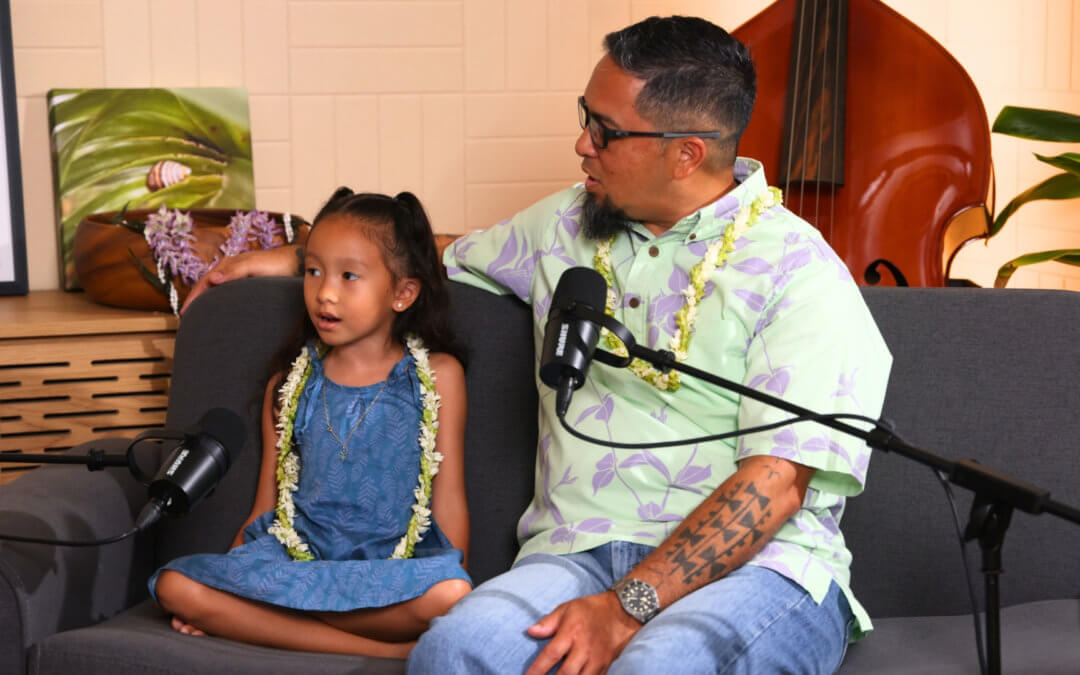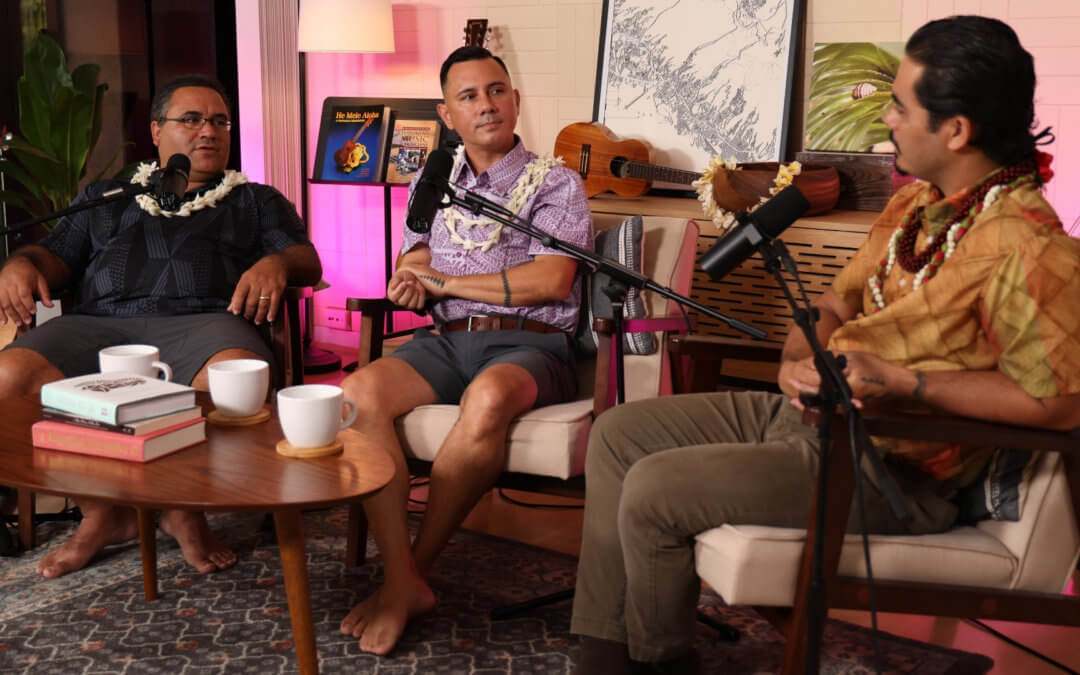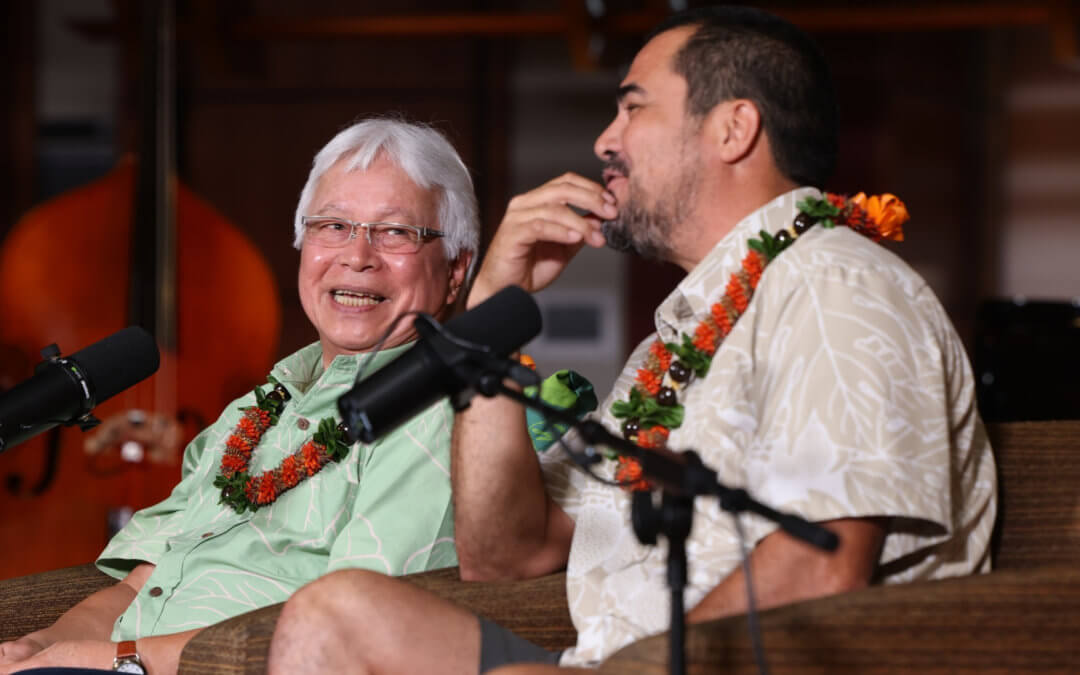Welcome to the tenth episode of Ka Leo ʻŌiwi, the newest Hawaiian language learning series. Join again with Hina, Pōmaikaʻi, and ʻIwalani as they practice ʻōlelo Hawaiʻi and kanikapila with some of our favorite musicians! As you continue these lessons, you’ll start to notice how our ʻōlelo Hawaiʻi is all around us.
This tenth episode includes an overview of what was learned in our previous episodes as well as an introduction of the Pepeke ʻAike ʻO, which is simlar to Pepeke ʻAike He. We also learn how to tell time. This episode, like the others before it, includes the lohe-ʻoni-walaʻau style of learning. Following our lesson, we go up uka to see some māla kalo. And later, we meet up again with your friend Kamakoa, who shares with us how to pound kalo!
Many of the lessons covered in Ka Leo ʻŌiwi are included in Nā Kai ʻEwalu, by Kauanoe Kamanā and Pila Wilson. To order a copy of the book, visit Hale Kuamoʻo.
Ka Leo ʻŌiwi provides a foundation in the Hawaiian language through engagement, interaction, and making the learner a part of the lesson through lohe (hear), ʻoni (act), and walaʻau (speak). Additionally, the individual learner sets the pace. If you missed a lesson, watch the episode again at your convenience on ʻŌiwiTV.









